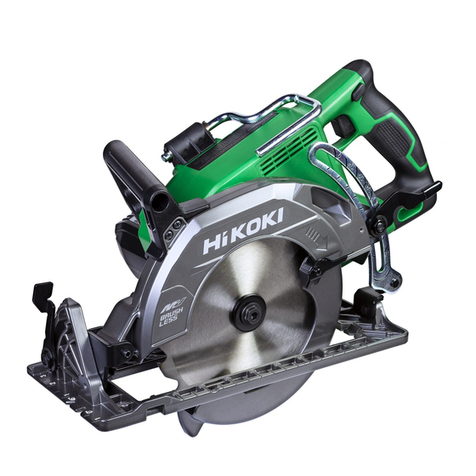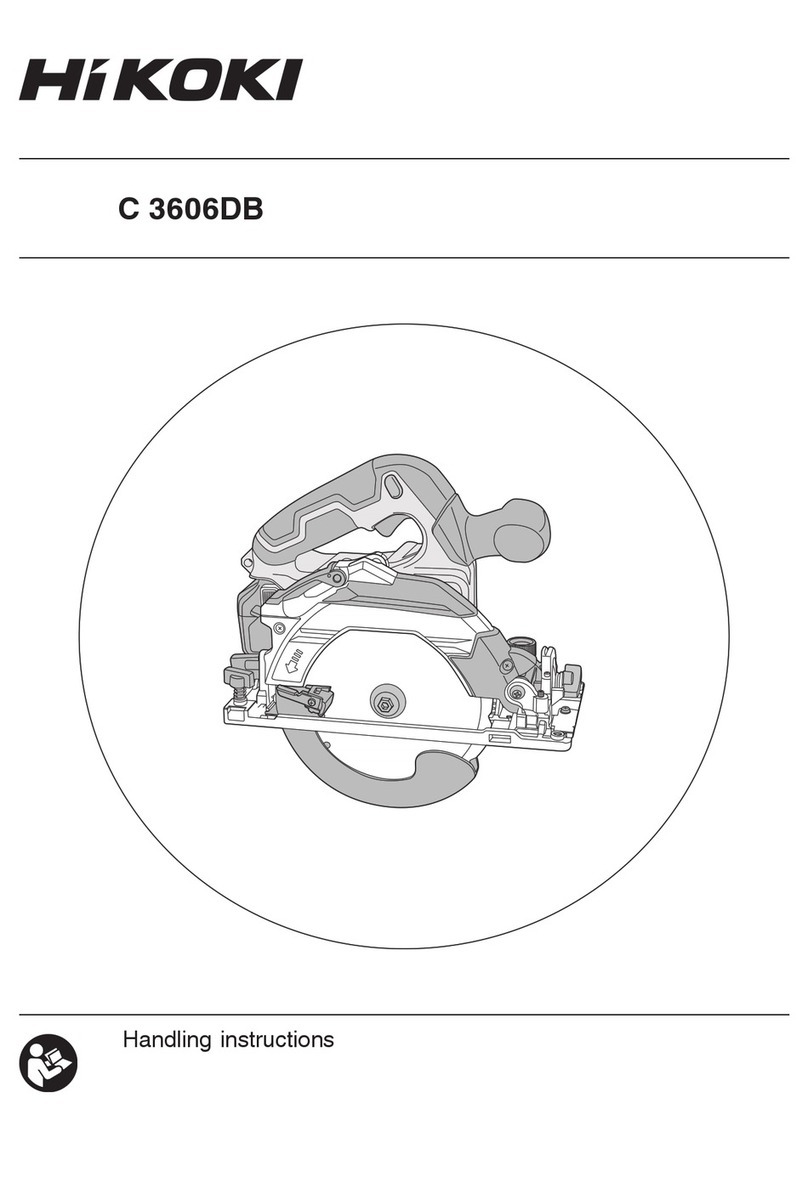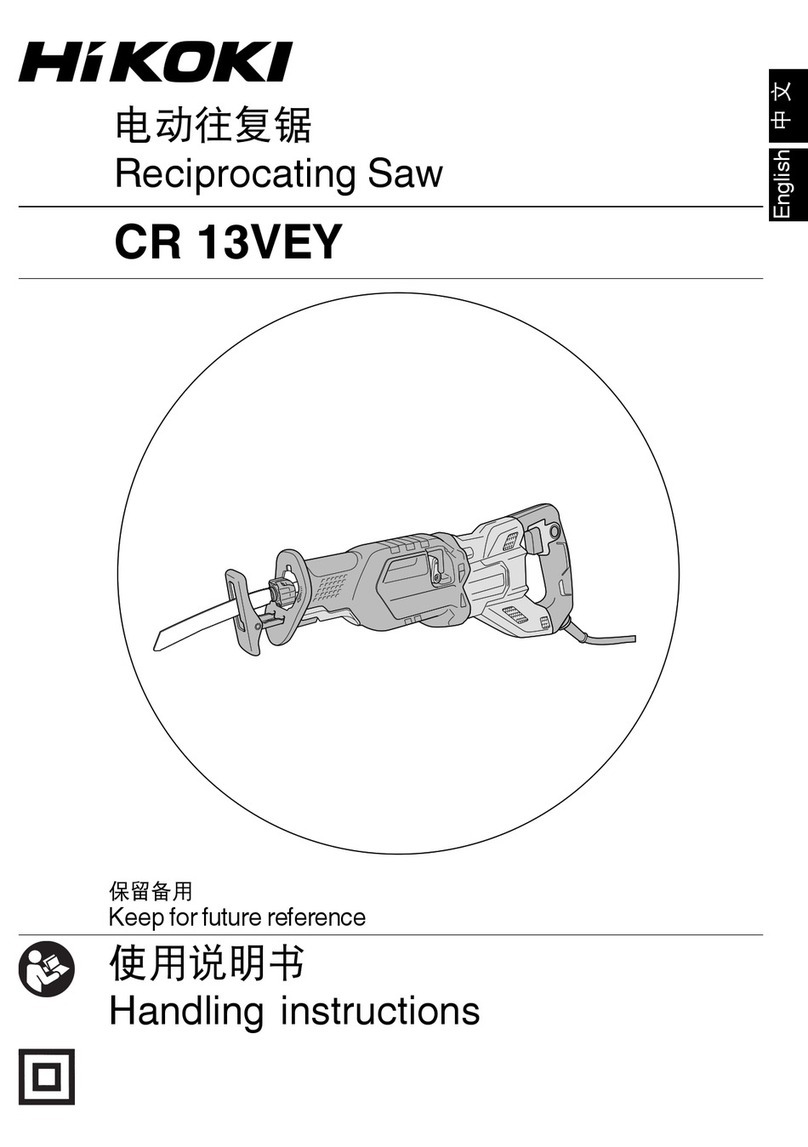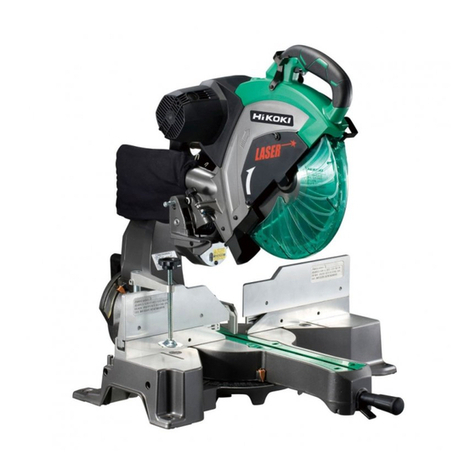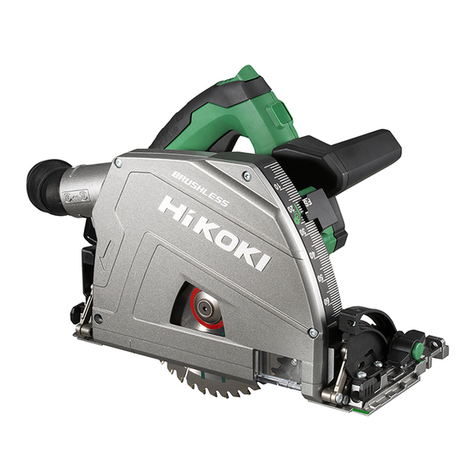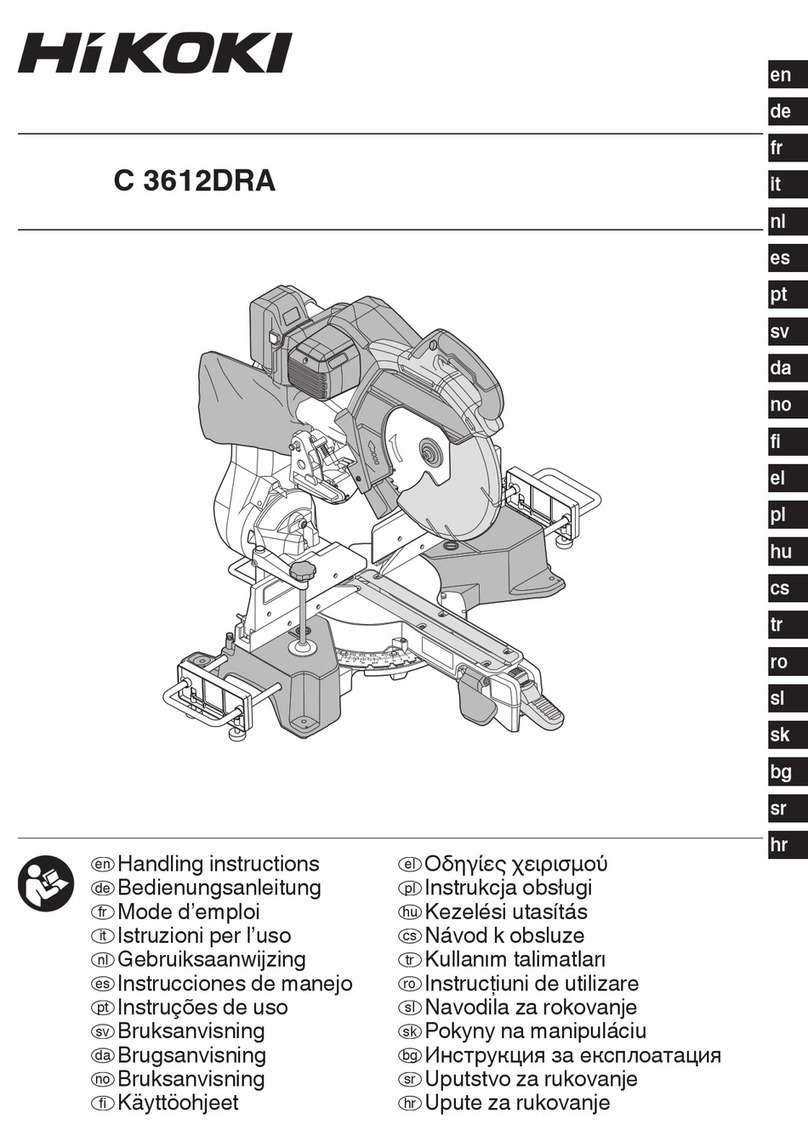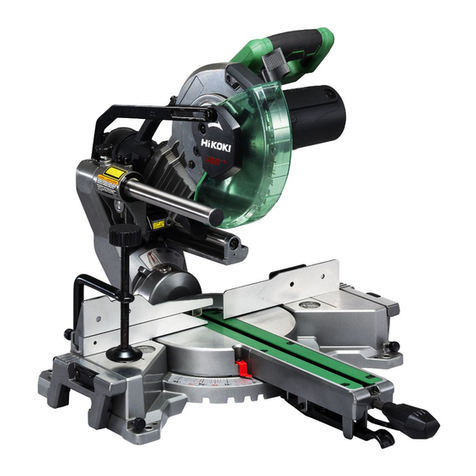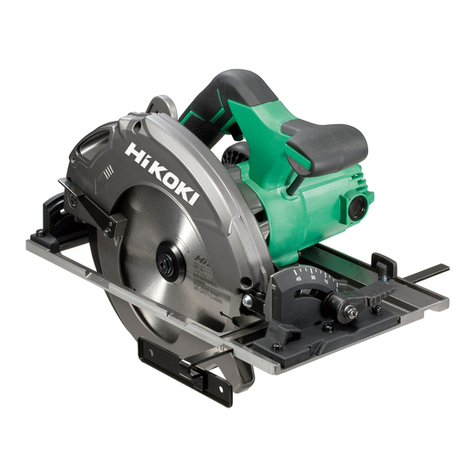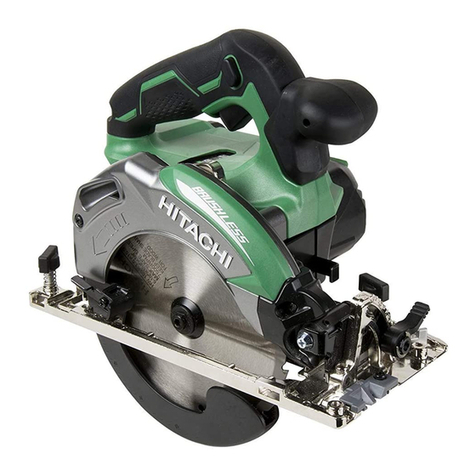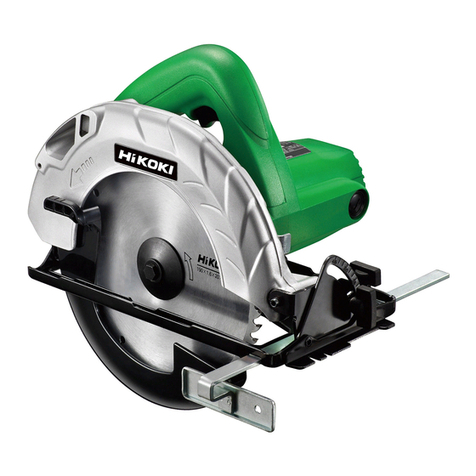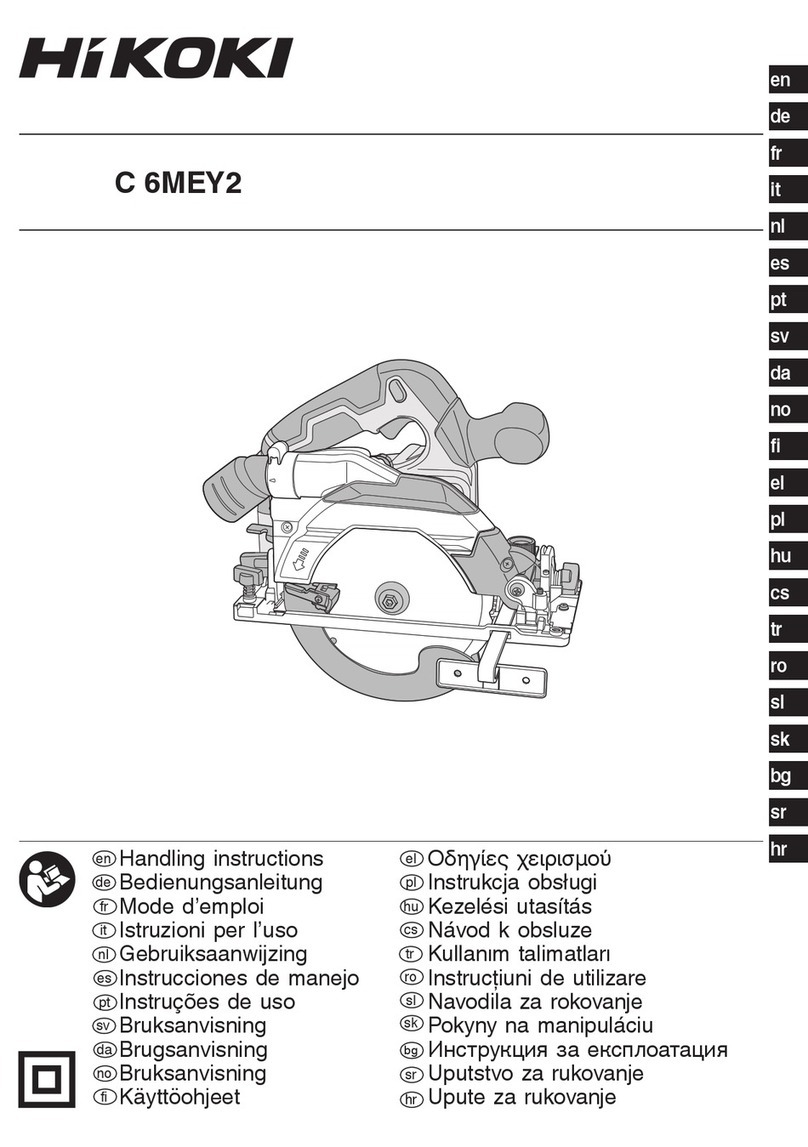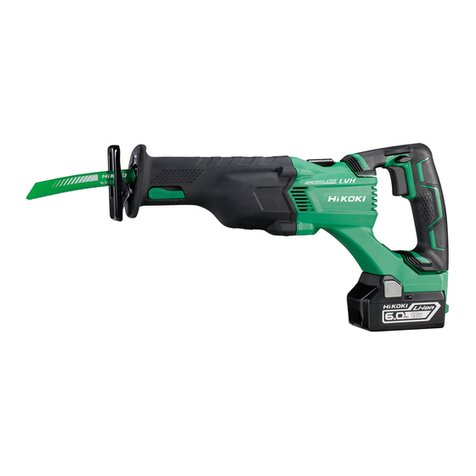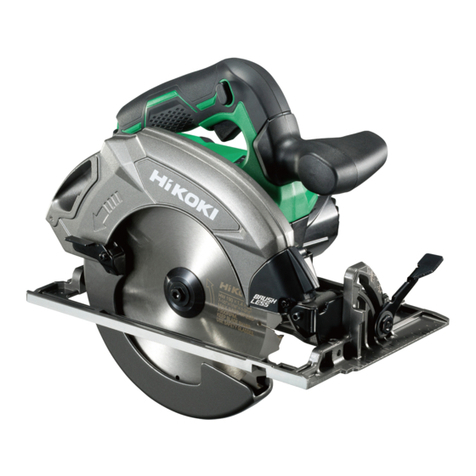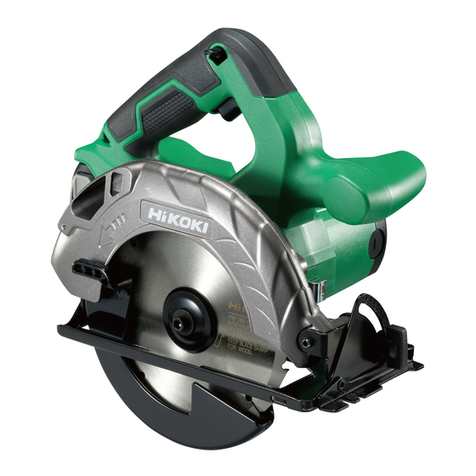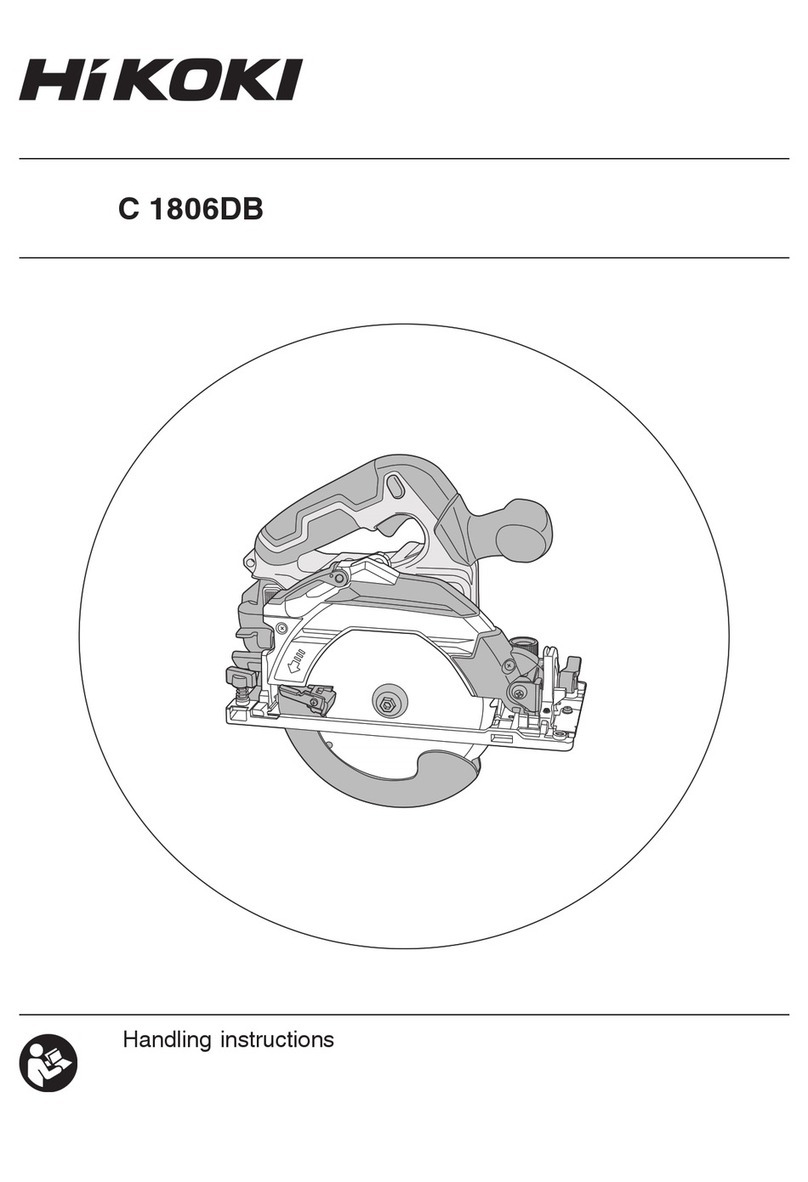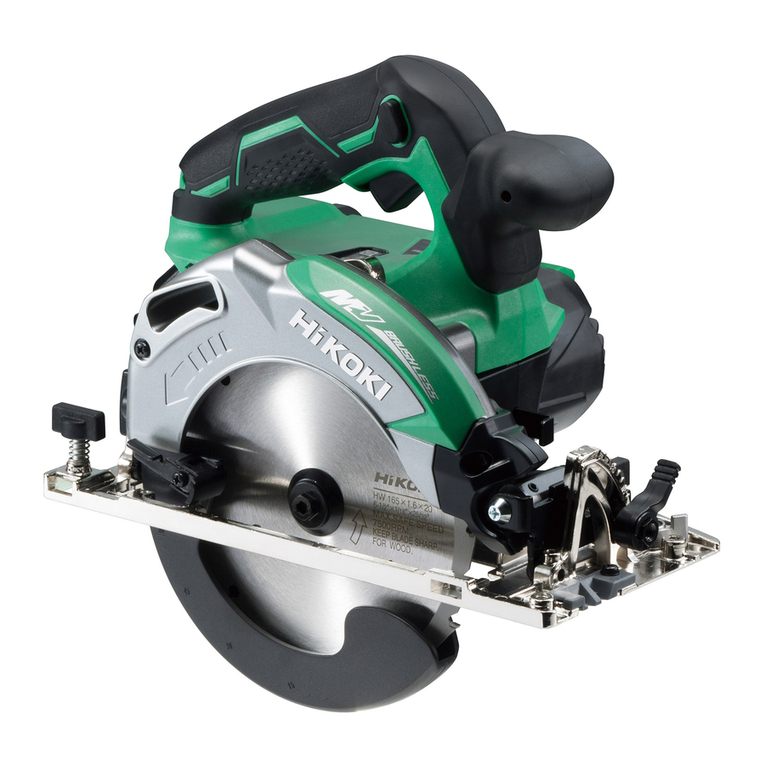
English
8
CAUTION
When pulling the saw blade, be absolutely sure to pull it
from the back. Pulling other parts of the blade will result
in an injury.
6. Dismounting the blade
(1) Turn on and offthe switching trigger several times so
that the lever can jump out of the front cover completely.
Thereafter, turn offthe switch and unplug the power cord.
(Fig. 1)
CAUTION
Be absolutely sure to keep the switch turned offand the
power cord unplugged to prevent any accident.
(2) After you have pushed the lever in the direction of the
arrow mark shown in Fig. 2, turn the blade so it faces
downward. The blade should fall out by itself. If the blade
doesn’t fall out, pull it out by hand.
CAUTION
Never touch the saw blade immediately after use. The
metal is hot and can easily burn your skin.
WHEN THE BLADE IS BROKEN
Even when the saw blade is broken and remains inside
the small slit of the plunger, it should fall out if you push
the lever in the direction of the arrow mark, and face the
blade downward. If it doesn’t fall out itself, take it out
using the procedures explained below.
(1) If a part of the broken saw blade is sticking out of the
small slit of the plunger, pull out the protruding part and
take the blade out.
(2) If the broken saw blade is hidden inside the small slit,
hook the broken blade using a tip of another saw blade
and take it out. (Fig. 7)
MAINTENANCE AND INSPECTION OF SAW BLADE
MOUNT
(1) After use, blow away sawdust, earth, sand, moisture,
etc., with air or brush them away with a brush, etc., to
ensure that the blade mount can function smoothly.
(2) As shown in Fig. 8, carry out lubrication around the blade
holder on a periodic basis by use of cutting fluid, etc.
NOTE
Continued use of the tool without cleaning and lubricating
the area where the saw blade is installed can result in
some slack movement of the lever due to accumulated
sawdust and chips. Under the circumstances, pull a
rubber cap provided on the lever in the direction of an
arrow mark as shown in Fig. 9 and remove the rubber
cap from the lever. Then, clean up the inside of the
blade holder with air and the like and carry out sufficient
lubrication.
The rubber cap can be fitted on if it is pressed firmly onto
the lever. At this time, make certain that there exists no
clearance between the blade holder and the rubber cap,
and furthermore ensure that the saw-blade-installed area
can function smoothly.
CAUTION
Do not use any saw blade with a worn-out blade hole.
Otherwise, the saw blade can come off, resulting in
personal injury. (Fig. 10)
7. Adjusting the base
(1) Lift the front cover up as illustrated in Fig. 11.
(2) If a base setting screw is loosened with an attached
hexagonal bar wrench, you can adjust a base installing
position. (Fig. 12, Fig. 13)
(3) After adjusting the base installing position, tighten the
base setting screw with the attached hexagonal bar
wrench completely.
8. Adjusting the blade reciprocating speed
This unit has a built-in electronic control circuit that
makes it possible to adjust the variable speed of the saw
blade by pulling a switching trigger. (Fig. 14)
If you pull the trigger further in, the speed of the blade
accelerates. Begin cutting at a low speed to ensure
the accuracy of your target cut position. Once you’ve
obtained a sufficient cutting depth, increase the cutting
speed.
CAUTION
Although this unit employs a powerful motor, prolonged
use at a low speed will increase the load unduly and
may lead to overheating. Properly adjust the saw blade
to allow steady, smooth cutting operation, avoiding any
unreasonable use such as sudden stops during cutting
operation.
HOW TO USE
CAUTION
○Avoid carrying it plugged to the outlet with your finger on
the switch. A sudden startup can result in an unexpected
injury.
○Be careful not to let sawdust, earth, moisture, etc., enter
the inside of the machine through the plunger section
during operation. If sawdust and the like accumulate in
the plunger section, always clean it before use.
○Do not remove the front cover (refer to Fig. 1).
Be sure to hold the body from the top of the front cover.
○During use, press the base against the material while
cutting.
Vibration can damage the saw blade if the base is not
pressed firmly against the workpiece.
Furthermore, a tip of the saw blade can sometimes
contact the inner wall of the pipe, damaging the saw
blade.
○Select a saw blade of the most appropriate length.
Ideally, the length protruding from the base of the saw
blade after subtracting the stroke quantity should be
larger than the material (see Fig. 15 and Fig. 17).
If you cut a large pipe, large block of wood, etc., that
exceeds the cutting capacity of a blade; there is a risk
that the blade may contact with the inner wall of the pipe,
wood, etc., resulting in damage (Fig. 16, Fig. 18).
1. Cutting metallic materials
CAUTION
○Press the base firmly against the workpiece.
○Never apply any unreasonable force to the saw blade
when cutting. Doing so can easily break the blade.
(1) Fasten a workpiece firmly before operation. (Fig. 19)
(2) When cutting metallic materials, use proper machine
oil (turbine oil, etc.). When not using liquid machine oil,
apply grease over the workpiece.
CAUTION
The service life of the saw blade will be drastically
shortened if you don’t use machine oil.
2. Cutting lumber
When cutting lumber, make sure that the workpiece is
fastened firmly before beginning. (Fig. 20)
CAUTION
Never apply any unreasonable force to the saw blade
when cutting. Also remember to press the base against
the lumber firmly.
000BookCR13V2Ara.indb8000BookCR13V2Ara.indb8 2018/03/0618:32:582018/03/0618:32:58

